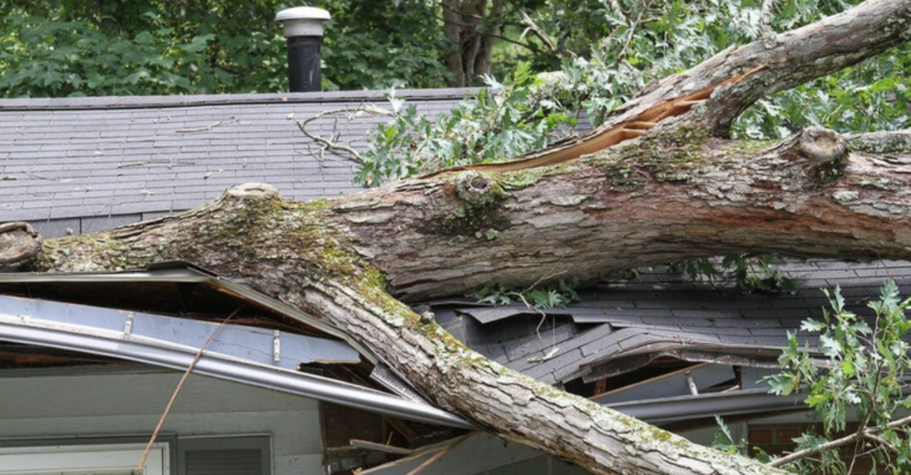What to do if a tree falls on your house
Tree Damage to your home - what you should know

It's no fun when a tree falls onto your property. In fact, it can be quite frightening at times. We are aware of the situation. That's why we've compiled a list of useful hints for dealing with a downed tree.
YOUR SAFETY IS YOUR FIRST PRIORITY
- In the event that someone is hurt, call 911.
- Contact the local power company as soon as possible if there are any damaged power lines or electrical risks.
- If you smell gas, get out of your house right away. Contact your local gas company to examine for a probable leak once you've gotten a safe distance away from your property.
ONCE YOU ARE SAFE
- When it's safe to do so, contact your insurance company to start your claim.
- Hire a reputable contractor to assess your home for damage, safety, and needed repairs. When there is no visible serious damage to the residence or other property buildings, we advocate doing so.
- Contact us, West Atlanta Tree. First we will review the situation to make sure we safely remove the tree from your house. We will then cut down any trees (or pieces of trees) that are dangerous and remove any remaining parts of the damaged tree.
- Secure or remove any property that is loose to protect yourself and anyone around you.
- Put a tarp or cover over shattered windows or other exposed sections of the house to protect your property and possessions from the elements.
- To reduce your risk to intruders, repair any broken fencing on your property.
- Take pictures of the damaged area (only if it's safe to do so) for peace of mind and to have visual aids accessible if you need them as part of your insurance claim.
HOW TO PREVENT TREES FROM FALLING ON YOUR HOUSE IN THE FUTURE
A tree falling on your property may appear to be an unforeseen occurrence, but there are several steps you can do to lessen the chances of this happening to you:
- Look after your trees. Consider employing an arborist to assist with any difficult upkeep on large projects.
- Keep an eye out for warning signals. A drooping trunk, fissures at the base of the tree, or damaged branches resting on healthy limbs could all be warning signs of impending disaster.
- Consult an arborist about the health of a tree that may be dying or posing a hazard.
- If you're concerned about the state of your neighbors' trees, talk to them. If your neighbor refuses to resolve the problem, write a follow-up letter and retain copies in case you need to refer to them later.
Do you have any questions? We're here to assist you with all your tree service needs. Give us a call at West Atlanta Tree at 770-830-3828 or fill out our contact form and we'll be in touch with you to discuss your questions.
